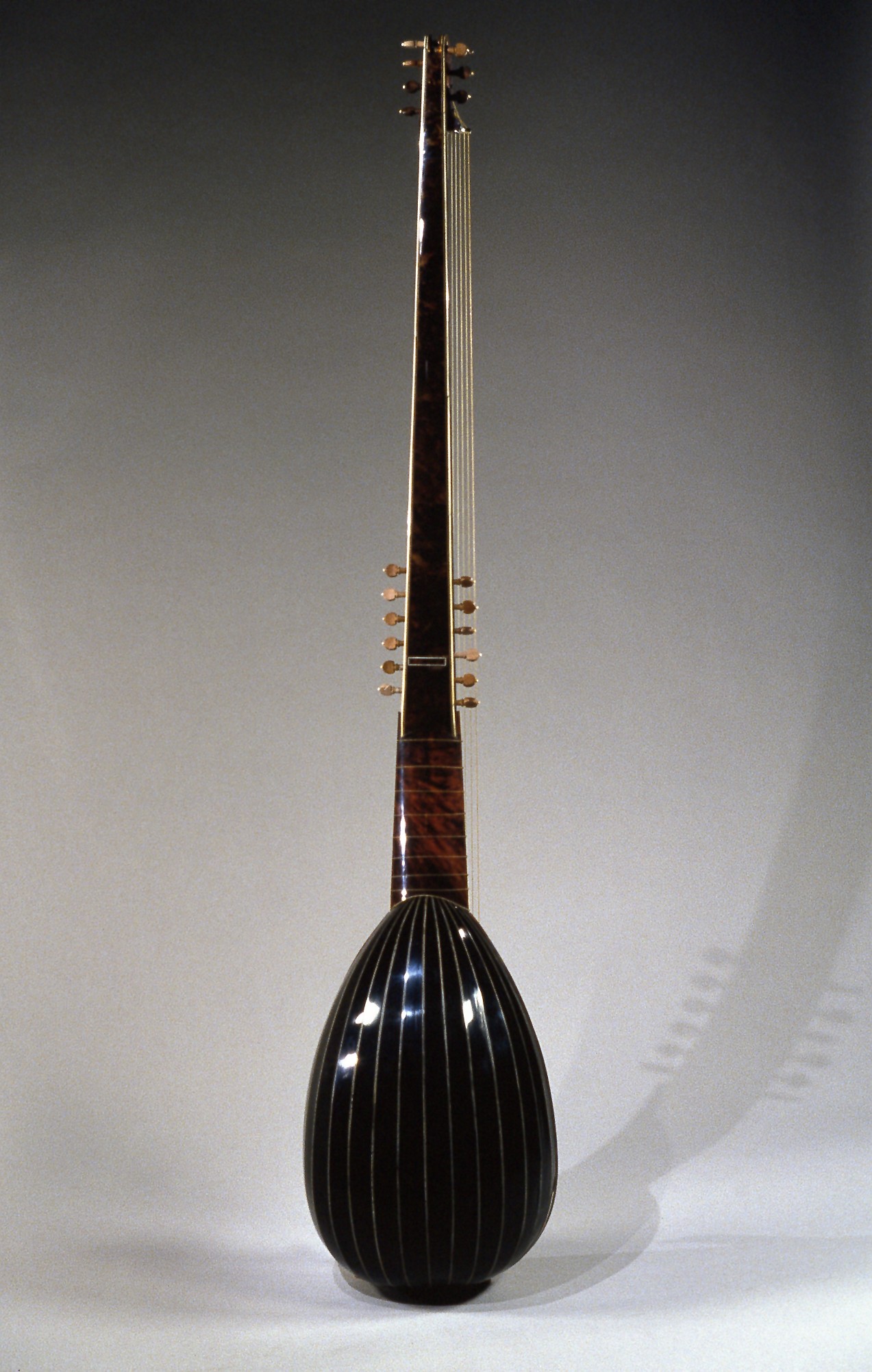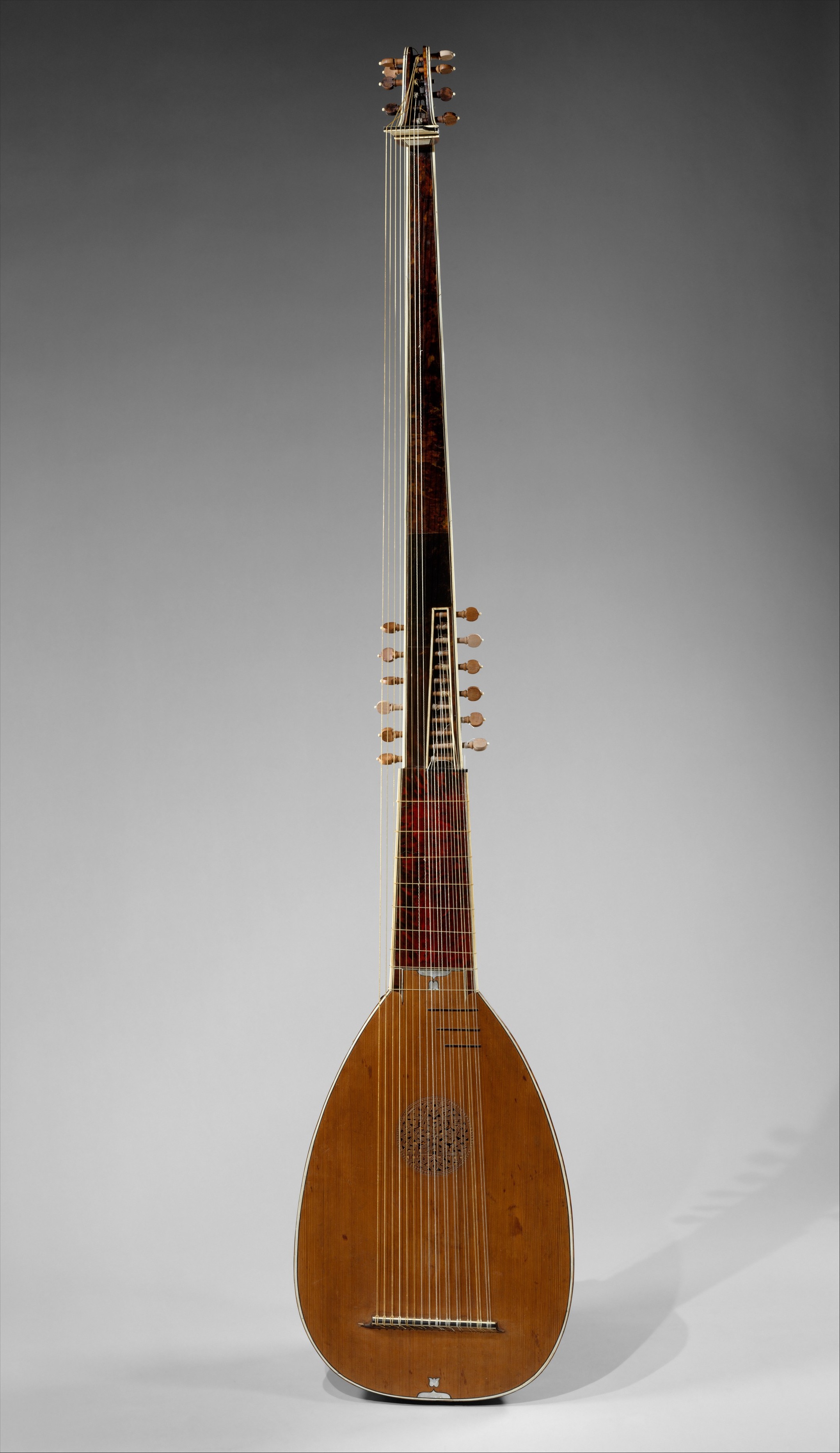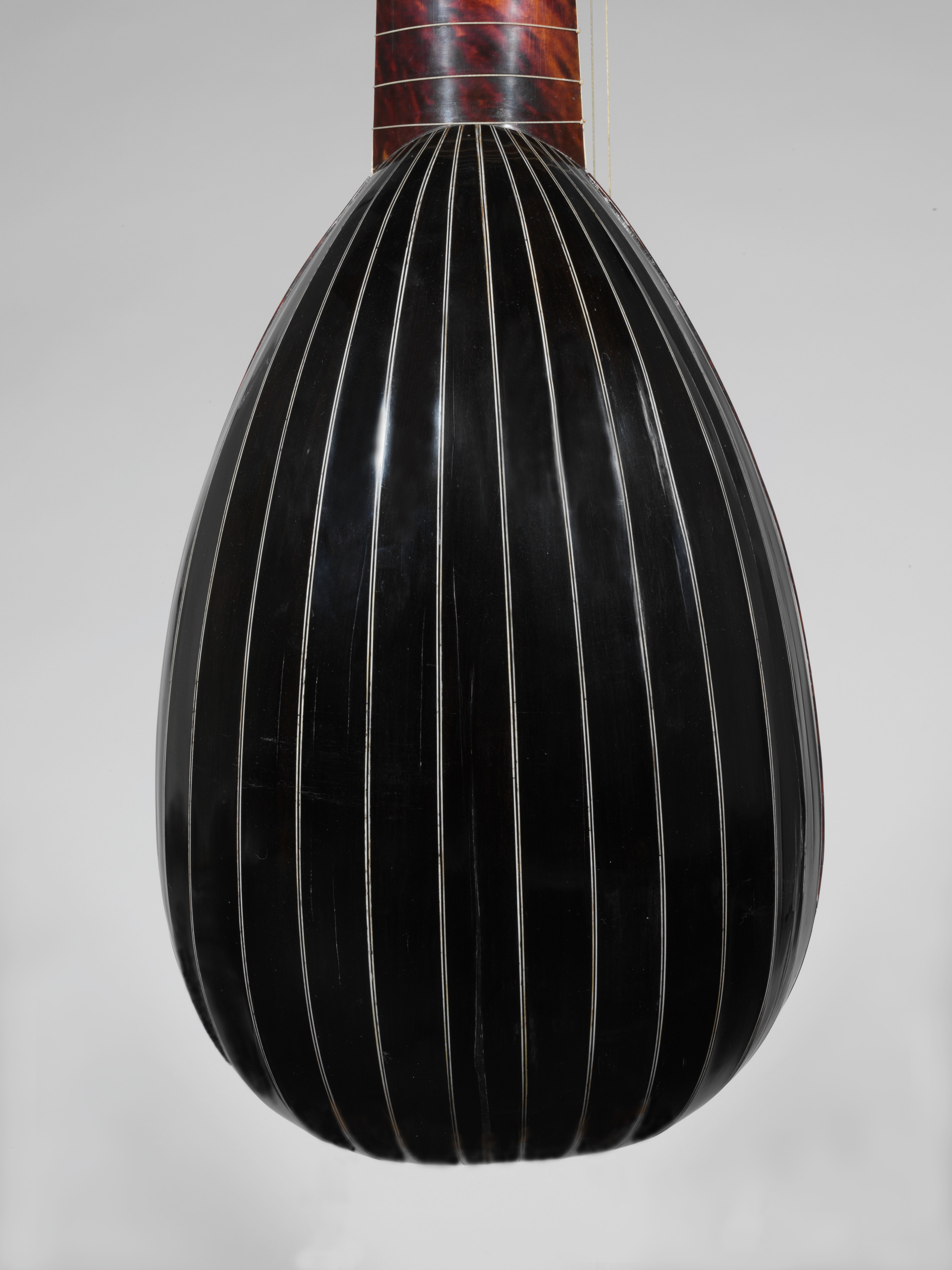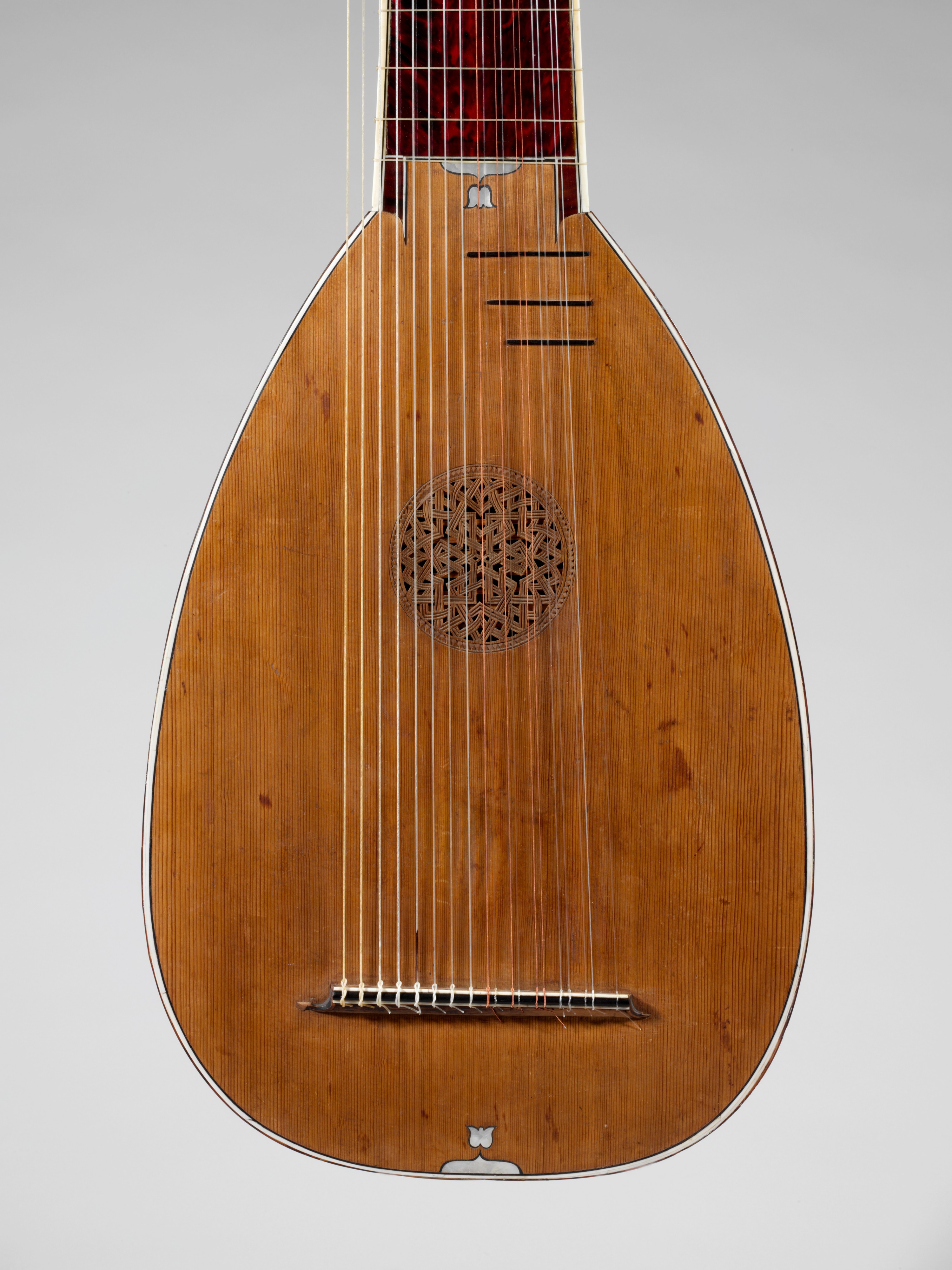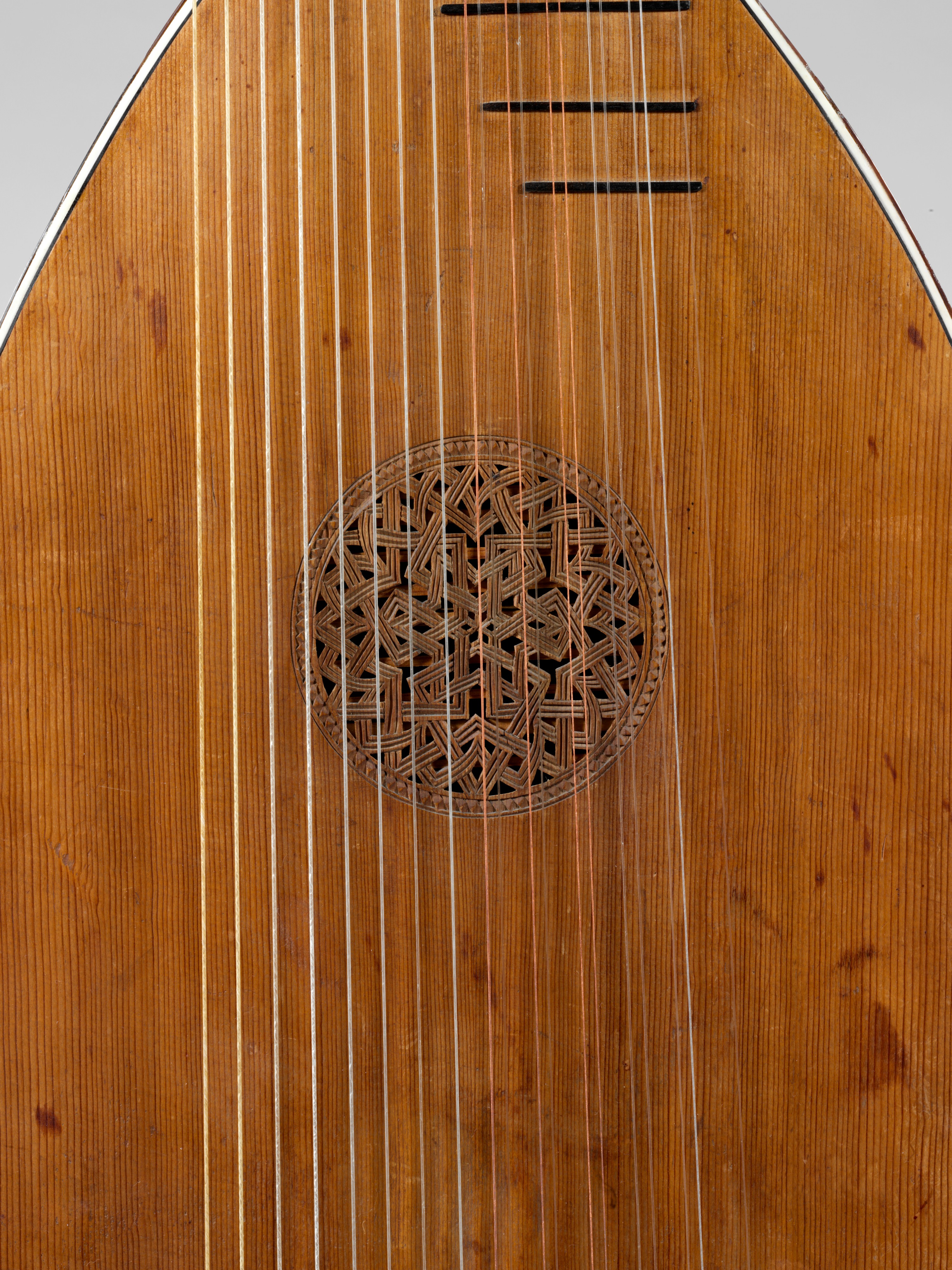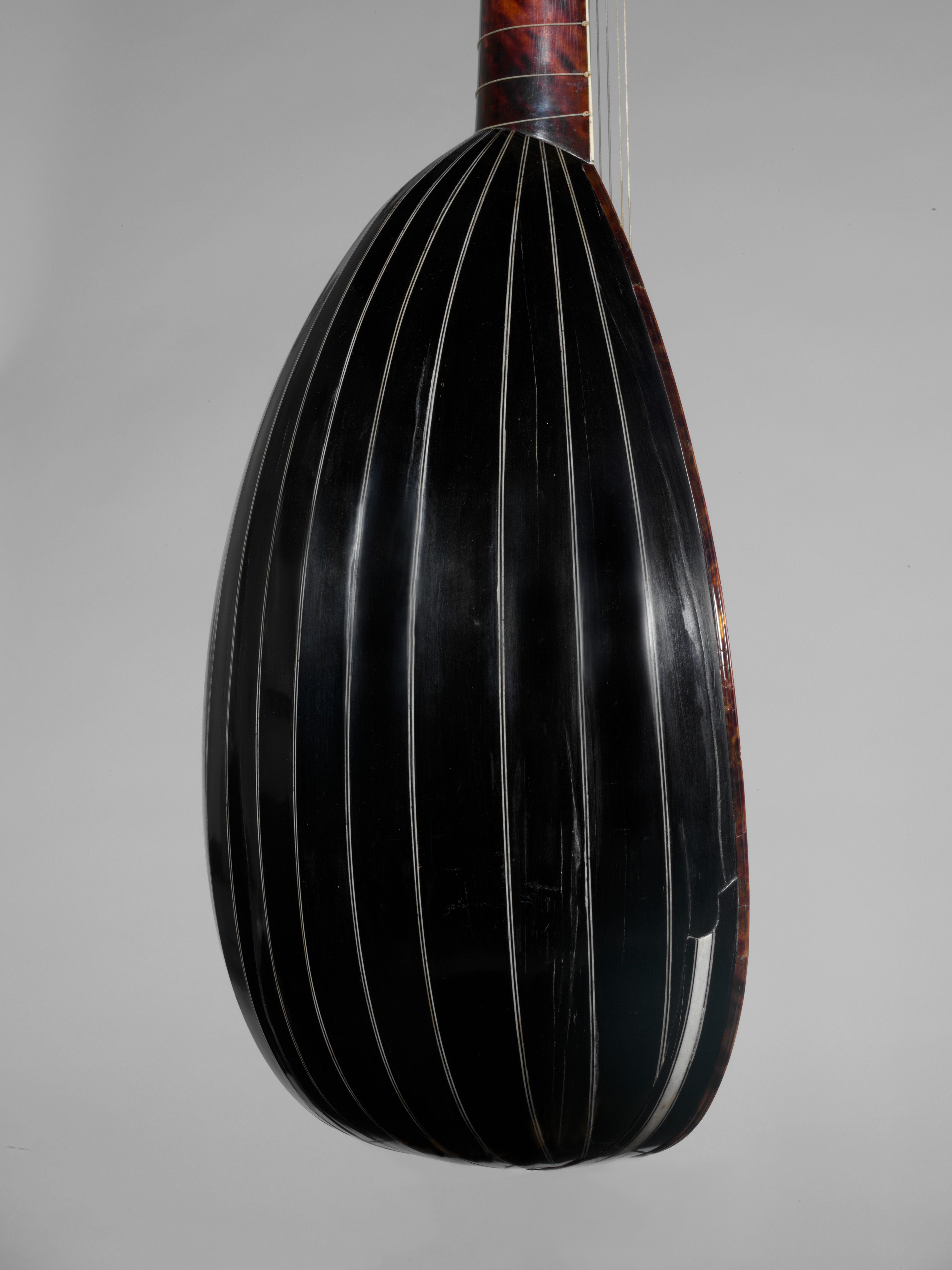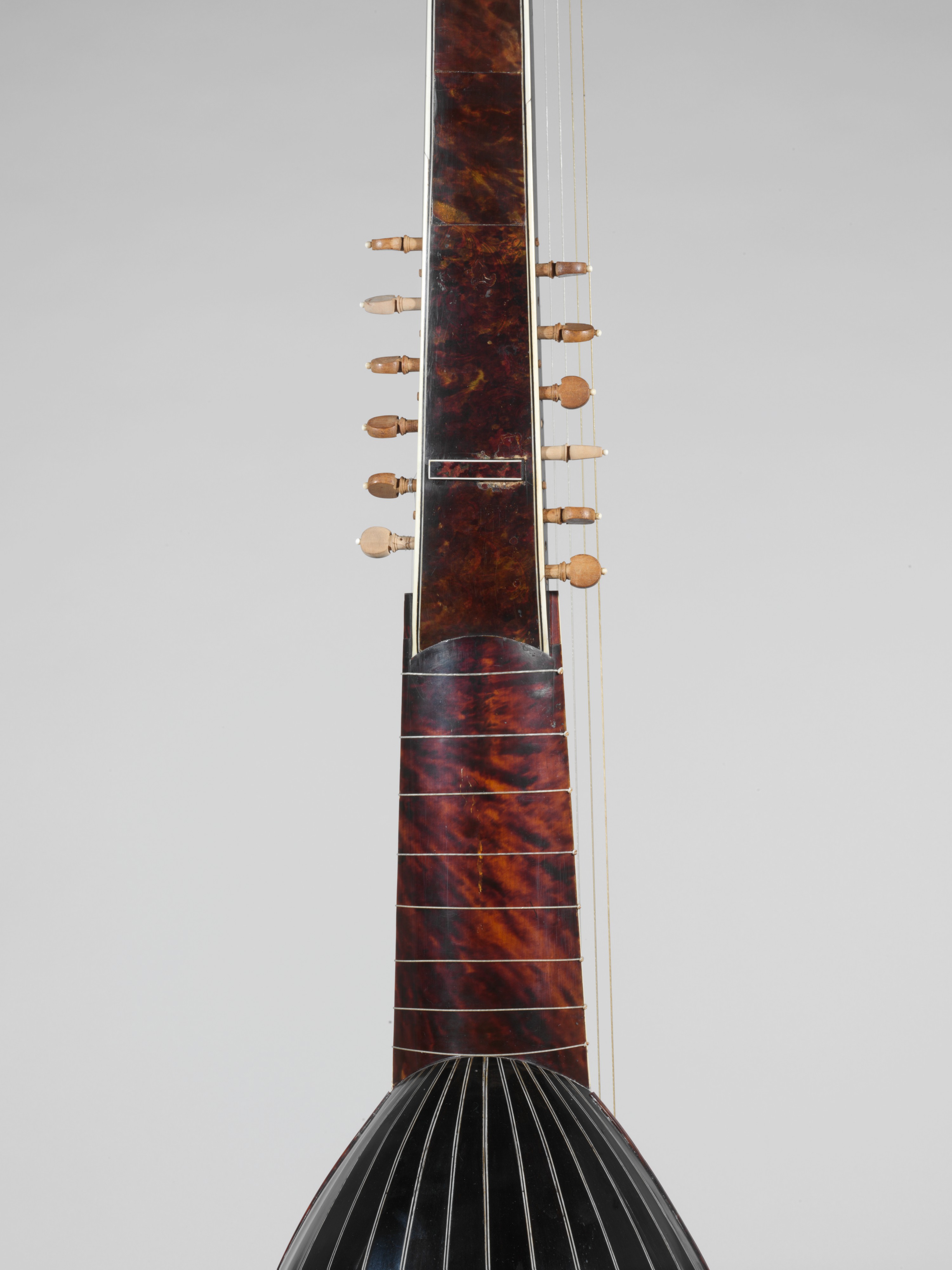Archlute
David Tecchler Austrian, active Italy
The large chitarrone, or theorbo, was invented in Florence about 1585 and was an important instrument in continuo playing, used in churches as well as chamber ensembles and orchestras. This example is a Roman variant with unfretted diatonic bass strings alongside six double courses played over the fingerboard. It is played a full step below the modern pitch standard. The instrument is similar to the theorbo depicted in La Hyre’s Allegory of Music, except that the example in the painting is single strung throughout. David Tecchler, the most prominent Roman luthier of the eighteenth century, famed for his violins and cellos, made this extraordinary example.
#Filippo Della Casa (1737-1810), Third movement (Allegro) from Sonata in C Dennis Cinelli, lute Darren O'Neill, engineer Musical Instruments East (India) Gallery, June 11, 2007
-
Filippo Della Casa (1737-1810), Third movement (Allegro) from Sonata in C Dennis Cinelli, lute Darren O'Neill, engineer Musical Instruments East (India) Gallery, June 11, 2007
-
Archlute, made in 2014 by Ivo Magherini, modeled after the David Tecchler instrument, ca. 1725, at The Metropolitan Museum. "Sarabanda" from "Sonate d'intavolatura di leuto" by Giovanni Zamoni, played by Christopher Morrongiello.
-
9462. Archlute
Playlist
Due to rights restrictions, this image cannot be enlarged, viewed at full screen, or downloaded.
This artwork is meant to be viewed from right to left. Scroll left to view more.


